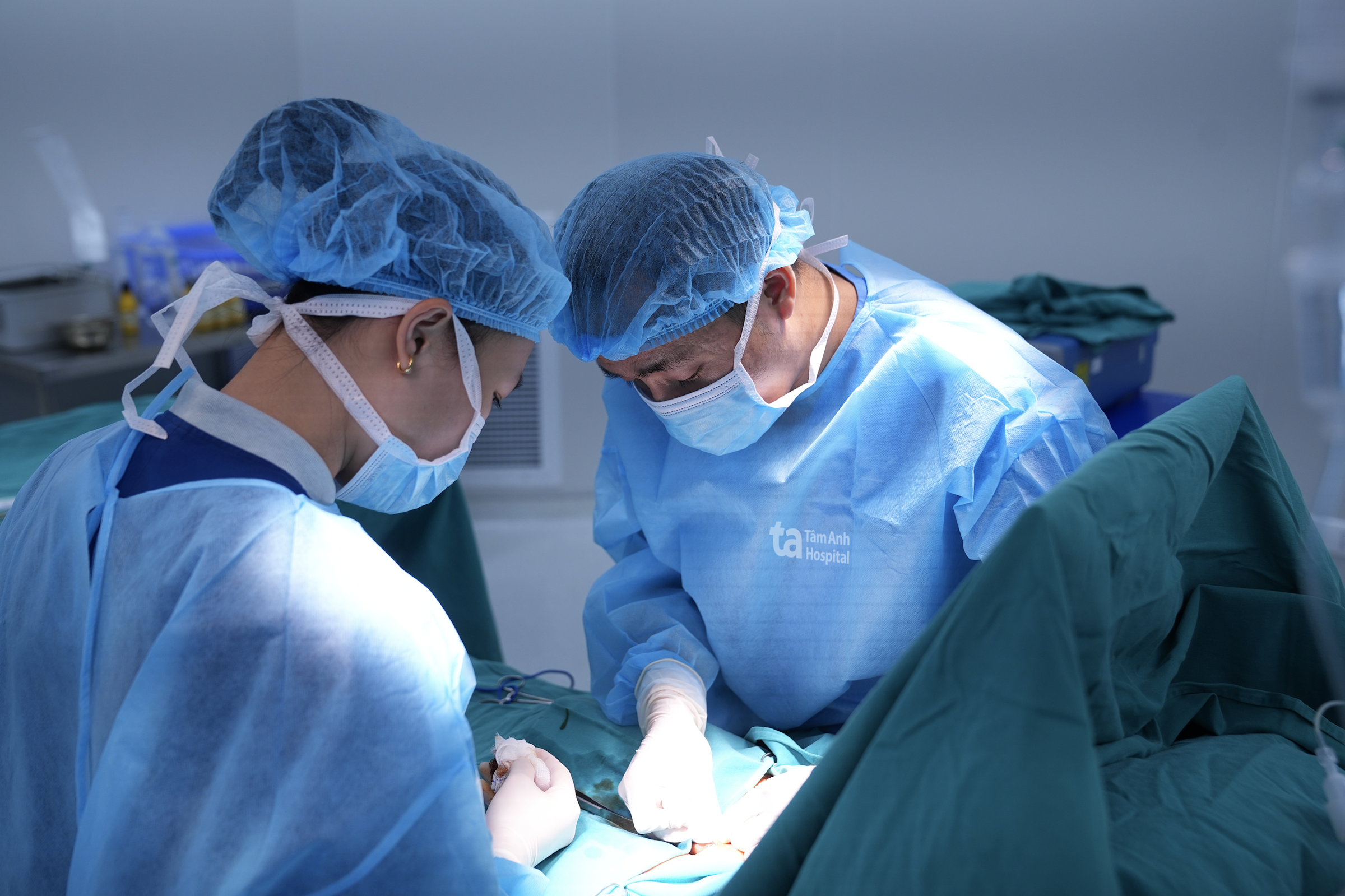Circumcision makes it easier for males to clean their genitals, preventing fungal and bacterial infections, along with other disease-causing agents that can lead to persistent genital inflammation. This, in turn, can affect reproductive health and increase the risk of penile cancer.
Dr. Nguyen Ngoc Tan, Master of Science, from the Department of Urology and Andrology at Tam Anh General Hospital in Hanoi, explains that circumcision doesn't significantly impact a child's health. With proper hygiene and dressing changes, recovery is swift, minimizing the risks of infection, bleeding, and the re-adhesion of the mucosal membrane to the glans penis. This membrane, newly exposed after surgery, is delicate and prone to sticking to surrounding tissue.
 |
Surgical team performing a circumcision. Photo illustration: Tam Anh General Hospital. *Italicized* |
Dressing Change Procedure
Necessary supplies include sterile gauze, sterile forceps (surgical instruments), dissecting forceps, scissors, betadine solution, 70% alcohol, 0.9% sodium chloride, nylon lining, clean gloves, medical tape, and bandage scissors. The procedure is as follows:
Step 1: Sanitize hands with soap and water, then use medical gloves to remove the old dressing, minimizing the risk of infection.
Step 2: Use saline solution or warm water to soften the gauze.
Step 3: Gently remove the dressing from the penis, avoiding any harsh pulling that could affect the surgical site.
Step 4: Clean the penis with the antiseptic solution prescribed by the doctor, avoiding rubbing to prevent bleeding.
Step 5: Apply a clean, soft, appropriately sized gauze dressing to the wound. Wrap the dressing moderately around the wound to prevent sticking, but avoid wrapping too tightly.
Dressings should be changed daily, following the correct procedure to minimize the risk of post-surgical complications. During dressing changes, parents should check if the child's incision has closed. If there's any redness, swelling, or pus, the child should be taken back to the doctor for prompt treatment.
Hygiene Practices
Dr. Tan emphasizes that improper urination after circumcision can affect the wound, especially in young children who can't care for themselves. Parents should change their child's dressing if it gets wet from urine and teach their child how to keep the dressing dry to prevent infection.
While full recovery typically takes 7-10 days, the incision usually closes and the swelling subsides within 2-3 days post-surgery. As a precaution, children should avoid bathing for 2-3 days after the procedure. During this time, parents should regularly clean their child's body with warm water to maintain comfort.
After the third day, children can bathe normally, but the penis should be protected, perhaps by covering it with a nylon sheath to prevent the wound from getting wet. After bathing, gently pat the area dry with a soft towel and apply a fresh dressing.
Parents should use clean water for hygiene to minimize the risk of infection. Avoid prolonged baths to prevent the wound from being submerged, which could create a breeding ground for bacteria. Don't rub the penis vigorously, avoid direct water pressure on the wound, and refrain from using hot water or soap on the incision. Use a cotton swab to dry the area and apply a new gauze dressing after bathing.
Minh Duc
| Readers can submit questions about men's health here for doctors to answer. |












